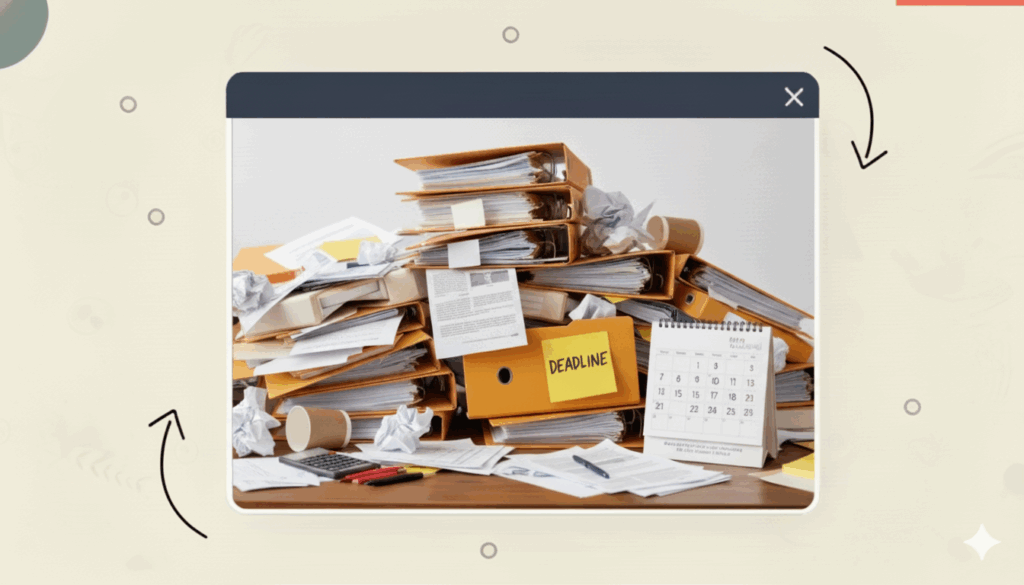Burnout in the American workforce has grown rapidly over the last two years, and it is becoming a real business problem rather than just a personal one. The State of Work in America report shows that burnout jumped from 36 percent in 2023 to 51 percent in 2024, one of the biggest increases researchers have seen in recent years. By 2025, stress levels climbed even higher, with 72 percent of employees saying they were experiencing moderate to very high stress at work, according to Aflac’s national workforce survey.
This rise in burnout comes with a very real financial cost for businesses. A 2025 model from the CUNY School of Public Health found that burnout can cost companies anywhere from 4,000 to 21,000 dollars per employee each year because of turnover, absenteeism, and lower productivity. For small business owners, that kind of loss adds up fast, which is why understanding burnout and addressing it early has become a critical part of running a sustainable business.
What is business burnout
Business burnout is a prolonged state of emotional, mental, and physical exhaustion caused by ongoing stress. It develops gradually, often without clear warning signs, and can make your business feel heavier, more difficult, and less fulfilling than it once did. Many entrepreneurs describe it as losing the spark that originally motivated them to build something of their own.
Burnout makes tasks feel overwhelming, decisions feel harder, and progress feels slower. Because it builds over time, small business owners often dismiss the early signs and push forward, believing they can manage “just a little more.” Recognizing burnout early gives you a chance to address it before it affects your health or your business.
Why small business owners are especially at risk
Small business owners experience burnout at higher rates because they typically carry multiple roles at once. You might handle operations, marketing, sales, customer service, bookkeeping, and strategy in a single week. As responsibilities grow, it becomes difficult to step away or delegate, and the lines between personal time and work begin to disappear.
Many business owners also face pressure to maintain consistent growth, satisfy customers, and manage finances in unpredictable economic conditions. These stressors stack up over time and create a sense that you cannot slow down without risking the business. Without intentional boundaries or support, it becomes increasingly difficult to recharge.
How burnout shows up
Burnout affects every part of your day. While it looks different for everyone, most people experience a combination of emotional, physical, and behavioral symptoms.
Emotional signs
- Feeling detached from your work
- Loss of motivation
- Irritability or emotional exhaustion
- Cynicism toward your business or customers
Physical signs
- Constant fatigue
- Changes in sleep patterns
- Tension headaches or muscle tightness
- Lower immunity or frequent illness
Behavioral signs
- Procrastination or difficulty starting tasks
- Declining quality of work
- Avoiding communication or responsibilities
- Increased mistakes or oversights
When several of these occur together, burnout becomes difficult to ignore and often requires a deliberate reset.
How burnout impacts your business

Burnout affects both your productivity and your decision making. When you are exhausted, it becomes harder to think long term, plan ahead, or make strategic choices. This can lead to stalled projects, missed opportunities, and slower growth.
Communication may also suffer. Response times may increase, tone may shift, or important details may be overlooked. Customers and team members often feel the impact before business owners realize how much burnout is influencing their work.
Over time, burnout can create distance between your goals and your daily actions, making it harder to stay aligned with the business you originally set out to build.
Step 1: Acknowledge the problem
The first step in addressing burnout is recognizing that it is happening. Many small business owners pride themselves on resilience, which makes it easy to overlook signs of exhaustion. By acknowledging the issue, you open the door to making meaningful changes and regaining control of your time and energy.
Step 2: Set boundaries that protect your time
Healthy boundaries are essential for recovery. This may include designating work hours, limiting after-hours communication, or creating an end-of-day routine that signals it is time to stop working. Even small changes, like turning off notifications or closing your workspace, help create separation between work life and personal life.
Clear boundaries allow your mind and body to recover, which ultimately supports better decision making and long term sustainability.
Step 3: Prioritize what matters most
Burnout often develops when too many tasks compete for your attention. To regain focus, start by identifying what directly supports revenue, growth, and long term goals. These should be your top priorities. Tasks with lower impact can be postponed, reduced, or delegated.
This approach helps reduce overwhelm and keeps your energy aligned with what truly moves your business forward.
Step 4: Stop doing everything alone

Delegation and support are key to preventing burnout. You do not need a large team to reduce your workload. Outsourcing a single recurring task, using automation tools, or simplifying certain processes can free up a significant amount of time.
Relying on tools and people who support your business allows you to focus on higher-value work and gives you more space to recover and recharge.
Step 5: Rebuild habits that support your well-being
Small, consistent habits help rebuild your energy. This may involve taking real breaks during the day, incorporating physical activity, setting aside time for hobbies, or stepping away from your computer during meals.
These habits act as fuel for your productivity and creativity. When you are rested and grounded, everything else becomes easier to manage.
Step 6: Reconnect with your original motivation
Burnout often disconnects you from your purpose. Reflecting on why you started your business can help you regain clarity and direction. Consider what motivated you in the beginning, what you hoped to achieve, and which parts of your current work still bring you satisfaction. Your original goals can guide you toward better choices moving forward.
Step 7: Know when to ask for help
If burnout is significantly affecting your sleep, mood, or daily functioning, consider talking to a mental health professional. Getting support can help you process stress, create healthier routines, and rebuild resilience. Prioritizing your well-being is essential for sustaining both your personal life and your business.
Conclusion
Burnout is more common than many business owners realize, especially in today’s demanding economic environment. But it is not a requirement for success. By recognizing the signs early, setting realistic boundaries, and creating habits that support your energy, you can build a healthier and more sustainable business.
If you are just beginning your entrepreneurial journey, now is the perfect time to create systems that protect your well-being from the start. You can explore how to start a small business with a balanced approach that prioritizes both growth and personal sustainability. Building strong habits early helps prevent burnout and supports the long term success of the business you envision.
